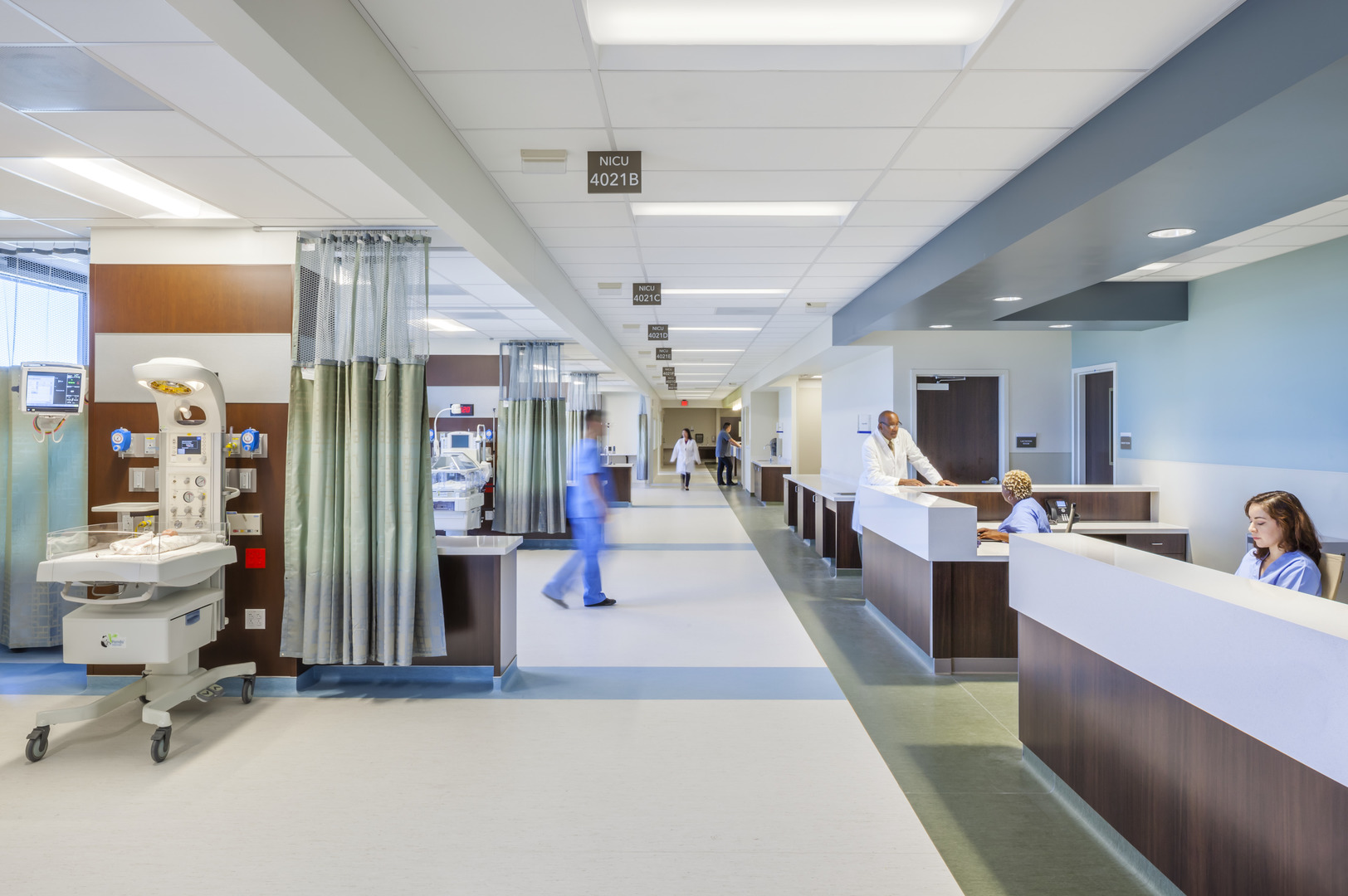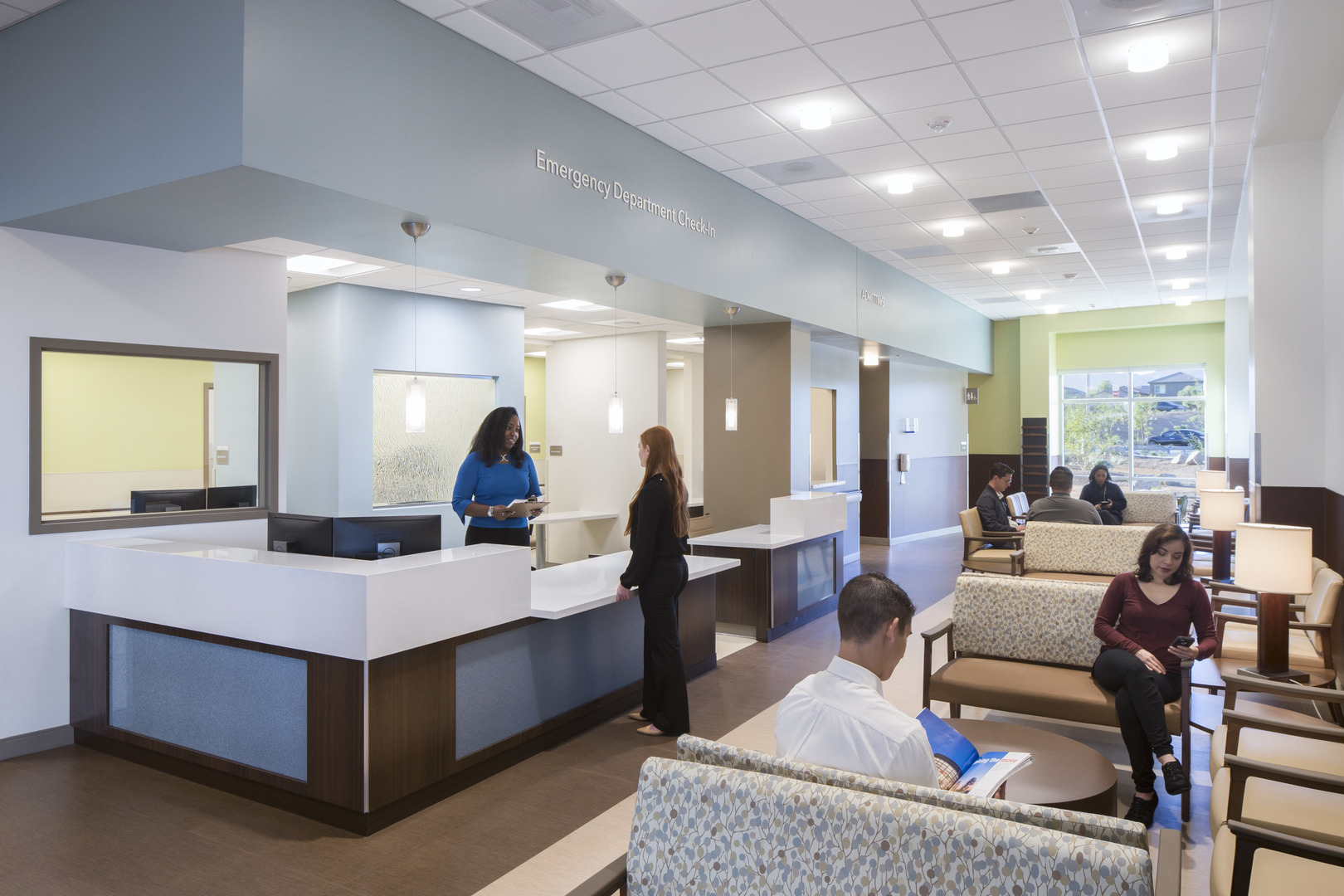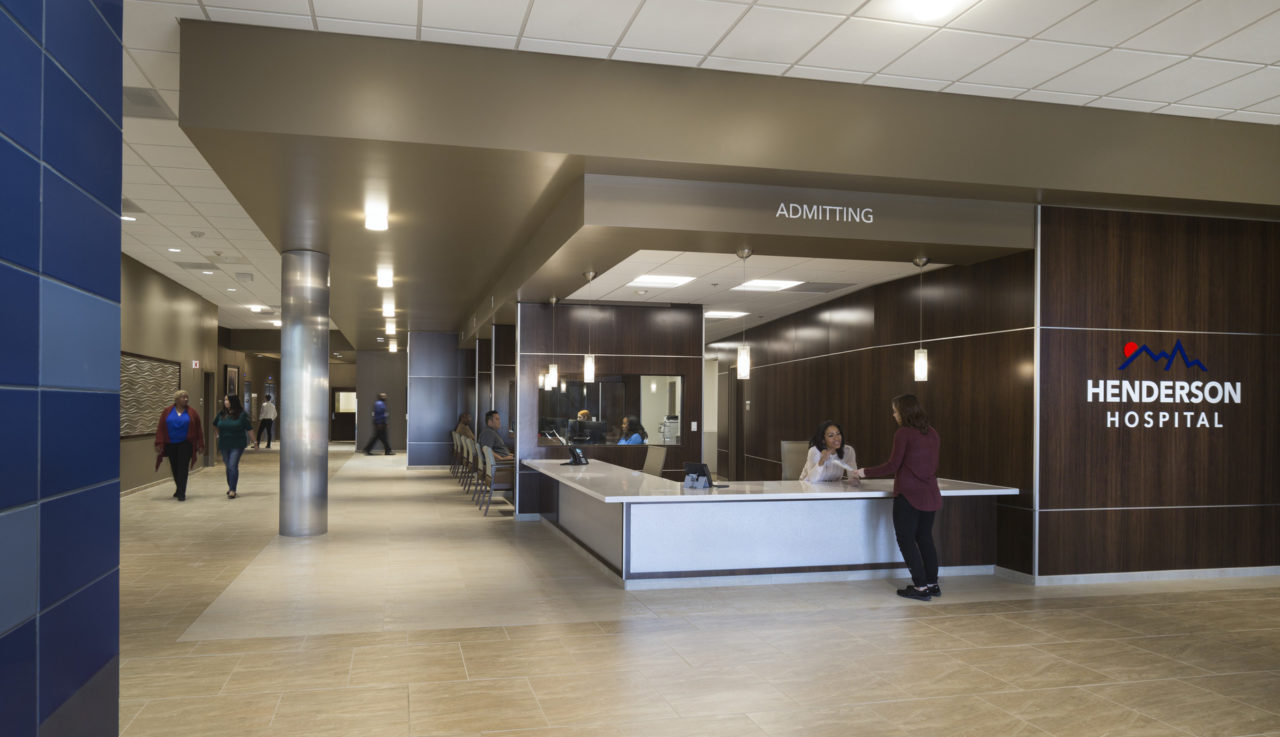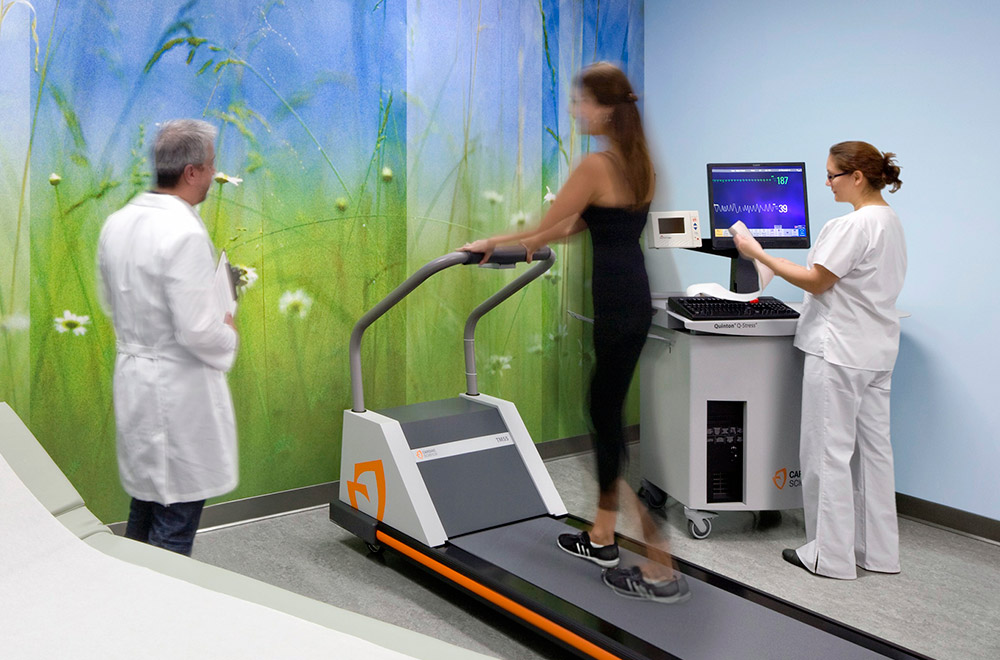More and more patients experiencing behavioral health issues are making their way to the emergency room at an increasing and alarming rate. Many health facilities are unable to accommodate large numbers of patients that present with mental health issues. The community’s emergency room is often the only choice for those in need of help. Balancing the impacts of behavioral health patients in emergency departments is a requirement for today’s designers to ensure that all patients and staff are provided with a safe and effective environment for those seeking immediate treatment.
Unfortunately, many hospitals can’t adequately handle mental health crises as they lack a dedicated behavioral health unit or the building hasn’t been designed to treat patients with unique needs. While specialized care in a dedicated facility is the best solution, there are techniques that designers can employ in emergency department design that can provide a safe environment for both patient and caregiver.
Why Behavioral Health Patients End Up in the ER
While there are certainly some walk-in cases, a good number of patients with behavioral health problems arrive in the emergency room via first responders, such as police, the fire department, or EMT services. Treating these patients requires special clinical skills and careful space planning strategies to provide safety for:
- Behavioral health (BH) patients
- Staff, or supporting family members
The majority of behavioral health patients exhibit the symptoms of drug and alcohol addictions, PTSD, or traumatic psychologically impacting events. Many of these patients are in poor health as their general well being and ability to care for themselves are complicated by mental health issues. Aggressive and loud actions, a common occurrence, often because they are brought to the emergency room against their will, is particularly disruptive for the department.
The Behavioral Health Problems Most Prevalent in the ER
According to emergency department staff, the following are key indicators of an on-setting behavioral health event:
- Pacing as a precursor to agitation
- Unusual patient loudness
- Anger that is usually misdirected at staff
Because patients often manifest outbursts in loud and disruptive behaviors, staff typically attempt to segregate patients immediately into rooms that are located close to nurse stations where they can be closely observed and receive proper attention. These patients demand resources that staff members may be ill-equipped due to limited training in recognizing symptoms or addressing behavior-specific concerns.
Specialized training is required to de-escalate patient behaviors in these situations. Some hospitals have a dedicated behavioral health team specifically trained to treat these patients, but many emergency departments are temporary holding areas until the patient can be transferred to a facility that specializes in behavioral health issues, or worse, stabilized temporarily and then released into the general population without adequate follow up care by social service workers.
 Implementing Behavioral Health Design Strategies
Implementing Behavioral Health Design Strategies
At HMC Architects, we are currently designing an emergency department expansion at the Kaiser Permanente Fresno Acute Care Hospital and are implementing several design strategies that address behavioral health issues. We’re increasing the number of exam treatment spaces from 21 to 37 spaces, but our client also requested that we provide three dedicated behavioral health treatment rooms be included as part of the 16 new rooms. In California, these rooms are commonly referred to as 51/50 rooms.
51/50 is a reference to Section 5150 of the California Welfare and Institutions Code, which authorizes a qualified officer or clinician to involuntarily confine a person suspected to have a mental disorder when they present a danger to themselves or others.
At Henderson Hospital in Henderson, Nevada, it was unfortunate to discover how long people with behavioral health problems would stay—sometimes as long as five days. These extended stays lead to throughput problems when the emergency department is also dealing with a large number of people with acute medical needs.
During the past several years, many cities across the US have experienced a significant uptick in the number of behavioral health patients that require immediate care. At the Fresno facility, it is estimated that up to 5% of the annual visits will be patients presenting with acute behavior-related disorders. Our client understands the very real need for dedicated spaces to help these patients.
 Designing to Prevent Self-Harm
Designing to Prevent Self-Harm
Dedicating rooms for behavioral health patients require specific strategies to provide a safe environment for patients. Anti-ligature design, designs that prevent patients from hanging themselves – is a key concept that prevents patients from doing harm to themselves or others. This is especially important if a patient is experiencing signs of severe depression or is expressing suicidal thoughts.
Anti-ligature rooms have the following design features:
- Hard, smooth surfaces, particularly the ceilings so that patients cannot access grids or ductwork to harm themselves.
- Recessed or vandal-resistant light fixtures with no glass components.
- Fully recessed vandal-resistant HVAC grilles and equipment.
- No attachments on the walls such as medical gases and other instruments.
- If medical gases are provided, they can be behind a rolling door that seals tight.
- Impact-resistant gypsum board.
- Seamless flooring for ease of cleaning.
- Tamper-resistant sinks in the room.
- Safety glazing that meets or exceeds national regulations.
While there are additional costs to secure and protect behavioral health patients from harming themselves and others, ensuring patient safety is paramount. Dedicated 51/50 rooms are not always in use by behavioral health patients so it is important to design the rooms flexibly to be used by the general emergent patient. As an example, access to medical gases can be provided behind a small roll-up door in the wall to ensure flexibility and to mitigate costs.
Acknowledging the Need for Behavioral Health Design
Fortunately, there is growing awareness and compassion for patients impacted by mental health issues because we see so many people—both young and old, of either gender—that are affected. By incorporating these designs and operational strategies into new or remodeled facilities, we are acknowledging the prevalence of behavioral health issues in our society and, as a result, our emergency rooms are better equipped to aid them.
HMC has decades of experience in healthcare emergency department design. Our teams listen to their clients and have strategies available to support our clients. To learn more about these tactics, contact HMC Architects today. To discuss project-specific concerns, email Christopher Naughton, Senior Healthcare Planner, directly.



